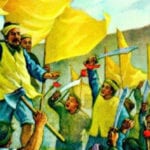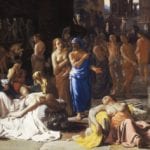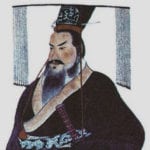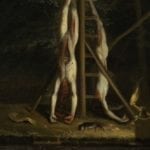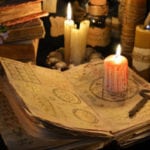 Weird Stuff
Weird Stuff  Weird Stuff
Weird Stuff  Our World
Our World 10 Ways Your Christmas Tree Is More Lit Than You Think
 Movies and TV
Movies and TV The 10 Coolest Stars to Set Sail on The Love Boat
 History
History 10 Things You Didn’t Know About the American National Anthem
 Technology
Technology Top 10 Everyday Tech Buzzwords That Hide a Darker Past
 Humans
Humans 10 Everyday Human Behaviors That Are Actually Survival Instincts
 Animals
Animals 10 Animals That Humiliated and Harmed Historical Leaders
 History
History 10 Most Influential Protests in Modern History
 Creepy
Creepy 10 More Representations of Death from Myth, Legend, and Folktale
 Technology
Technology 10 Scientific Breakthroughs of 2025 That’ll Change Everything
 Weird Stuff
Weird Stuff Ten Bizarre Facts About The Doge Meme
 Our World
Our World 10 Ways Your Christmas Tree Is More Lit Than You Think
 Movies and TV
Movies and TV The 10 Coolest Stars to Set Sail on The Love Boat
Who's Behind Listverse?

Jamie Frater
Head Editor
Jamie founded Listverse due to an insatiable desire to share fascinating, obscure, and bizarre facts. He has been a guest speaker on numerous national radio and television stations and is a five time published author.
More About Us History
History 10 Things You Didn’t Know About the American National Anthem
 Technology
Technology Top 10 Everyday Tech Buzzwords That Hide a Darker Past
 Humans
Humans 10 Everyday Human Behaviors That Are Actually Survival Instincts
 Animals
Animals 10 Animals That Humiliated and Harmed Historical Leaders
 History
History 10 Most Influential Protests in Modern History
 Creepy
Creepy 10 More Representations of Death from Myth, Legend, and Folktale
 Technology
Technology 10 Scientific Breakthroughs of 2025 That’ll Change Everything
10 Atrocious Genocidal Riots Throughout History
Similar to genocides, but usually less well-organized or widespread, pogroms are violent riots with the purpose of either persecuting or killing a specific religious or ethnic group. Traditionally, the word has been used when dealing with anti-Semitic acts, but it is not unique to the Jewish people. Russian in origin, “pogrom” means “to wreak havoc, to demolish violently.”
10Alexandrian Riots

One of the first pogroms in history was the Alexandrian riot that took place in AD 38. Six years before, Flaccus was appointed governor of Egypt and Alexandria while under the rule of emperor Titus. In AD 37, Titus was succeeded by Caligula, and Flaccus fell into a depression. Since he had supported Caligula’s rival candidate for the throne, he sought to earn the affection of the new emperor. The Greek citizens of Roman Alexandria persuaded Flaccus that the best way to win the emperor’s heart was to persecute the Jews because Caligula despised them.
As the months passed, the Jewish population suffered one humiliation after another, but things only escalated when Herod Agrippa, the new king of Judea, came to visit his friend Caligula in Alexandria. The Greeks taunted Herod and insulted him with a play as he was a fervent fighter for the Jewish people. It was an insult to which Flaccus turned a blind eye. Supported by their governor’s apathy, the Greeks continued their hatred for the Jewish citizens and desecrated their synagogues with statues of Caligula.
Shortly thereafter, Flaccus decreed that all of the Jews were to be considered foreigners with next to no rights. The pogrom started with random murders, blasphemy, and the creation of a ghetto that succumbed to disease. The rioting stopped when Flaccus was exiled and eventually murdered. Philo of Alexandria wrote that Flaccus’s body received “the same number of wounds as that of the Jews who had been unlawfully murdered by him.”
There are very few sources about the riots of Alexandria, with Philo being one of them. The death toll is unknown, and it is said that the Greeks destroyed at least 400 Jewish homes.
9Lviv Pogroms
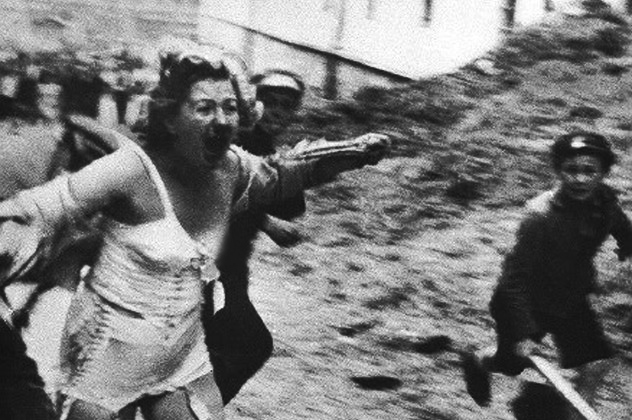
Though not solely committed by Ukrainian citizens, the Lviv pogroms took place after the city was occupied by the Germans, who claimed that the Jewish population had supported the Soviets. It was a lie that the Ukrainians were happy to accept. Much of the destruction and death that followed the German takeover was the result of prison massacres perpetrated by Soviet NKVD secret police. On July 1, 1949, shortly after the German Nazis arrived, the first pogrom began.
German control of Western Ukraine made the Jewish citizens flock to Lviv and brought the city’s population to over 200,000 people. It was considerably higher than that of the native Ukrainians. Nevertheless, with the support of the Nazis, it led to the creation of a militia of 31,000 people and started the systematic murders of the Jewish population.
Later that month, Ukrainian nationalists declared a “Day in Honor of the Memory of Petliura,” who was a former Ukrainian politician that had been assassinated by a Russian Jew. Wanton rape, murder, and desecration marked the days of the Lviv pogroms, with less than 1,000 Jews still alive in the city when Soviet forces recaptured it in 1944. Most of them were, again, victims at the hands of the Nazis and their concentration camps; the Lviv pogroms were only responsible for around 6,000 deaths.
8Kielce Pogrom
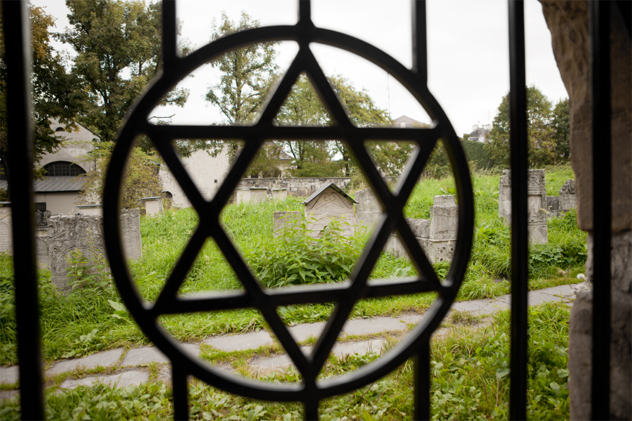
Before World War II, there had been nearly 24,000 Jewish citizens in the town of Kielce. By the war’s end, almost every one of them had died in the Holocaust—only around 200 had returned to the city by 1946. Their luck seemed to change when a handful of them were able to reclaim property they had lost under the German occupation. But it was to be short-lived.
On July 4, 1946, the Kielce pogrom in Poland started because of a nine-year-old boy. Three days prior, a boy named Henryk Blaszczyk wandered away from his home without permission. When he returned two days later, rather than take his parents’ punishment, he lied. The boy claimed that Jews had kidnapped him and held him in the basement of a Jewish shelter in the city. Drawing on centuries of anti-Semitic bigotry that had always charged Jews with murdering Christian children for supposed “blood rituals,” the people of the town crowded the Jewish shelter and demanded retribution.
A police investigation quickly poked holes in Blaszczyk’s story (the shelter didn’t even have a basement), but the angry mob still shot the Jews inside the building. At the end of the day, 42 Jews were killed and 40 more were injured. Although a handful of the perpetrators were executed for the crime, fear began to permeate the Jewish community. Over 75,000 Jews fled Poland in the months that followed, part of a larger migration known as the Brihah (Hebrew for “flight” or “escape”).
7Hebron Massacre
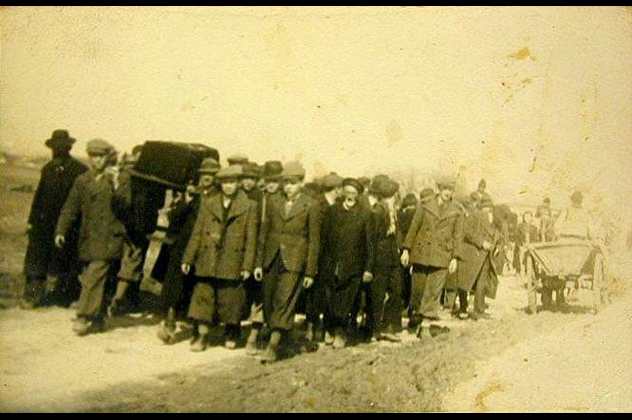
Hebron, the largest city in the West Bank, is considered the second holiest city in Judaism. The city contains the Cave of the Patriarchs (the traditional burial site of the patriarchs and matriarchs of the Jewish faith). Much like today, Hebron in 1929 housed a relatively small number of Jews with a much larger number of Arabs. With the flames of their anger toward the Jewish people fanned by the Balfour Declaration of 1917—a British letter which promised Jews a homeland in Palestine—the Arab citizens of Hebron began to despise their new neighbors even more. Although Jews had lived in the city for centuries, the original ones were Sephardic Jews (Jews from Spain, North Africa, and other Arab countries), while the new immigrants were Ashkenazi Jews (native European Jews).
Tensions began to bubble to the surface. The Arab citizens were distrustful of the Ashkenazi Jews because they dressed, acted, and talked differently. Despite an increasingly large number of warnings about possible violence in the months and years leading up to the year 1929, the British authorities neglected to do so much as lift a single finger. In fact, at the time of the massacre, there was only one British policeman in the entire city.
On August 23, 1929, the first death took place at a yeshiva (a Jewish religious learning institution) when a student was attacked and killed. Early the next morning, widespread organization took place and mobs surrounded Jewish properties, killing and ransacking indiscriminately. A Rabbi who had sheltered some Jews was offered a deal: Hand over the Ashkenazi Jews that were in his care and the lives of the Sephardic Jews would be spared. The Rabbi refused and was killed on the spot. By the end of the attacks, nearly 70 Jews had lost their lives, and those who survived were forced to leave the city. They resettled in Jerusalem.
6Lisbon Massacre
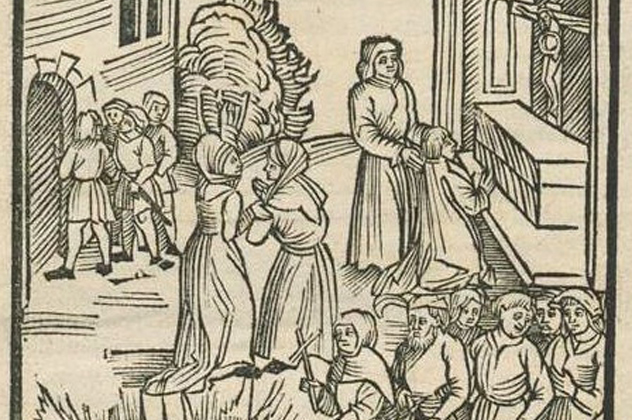
A few years before 1506, the Jewish population, supposedly tens of thousands, had been forced to convert to Roman Catholicism and were known as New Christians. Having fled Spain to escape persecution in 1492, many Jews were willing to make concessions in order to live in peace, although they still practiced Judaism privately. Rumors of the betrayal to their New Christian status grew, and when droughts and epidemics terrorized the land, they were pinned with the blame.
On April 19, 1506, during a prayer service at a church, one of the local Catholics burst out with joy and claimed that he had seen the face of Jesus on the altar. It was a sure sign that some miracle was going to put an end to the drought. One man, a New Christian, argued against him and said that it was only an optical illusion created by light on the altar. Despair and mob mentality grew until the “true” Catholics took the New Christian outside and beat him to death. The Catholics went back inside the church and killed the rest of the them, then moved into the streets.
The killing stopped within three days, but by then the death toll had already grown to between 1,000 to 4,000 New Christians. After the pogrom ended, King Manuel I punished a handful of the perpetrators, including the two Dominican friars who had instigated the violence.
51984 Sikh Massacre
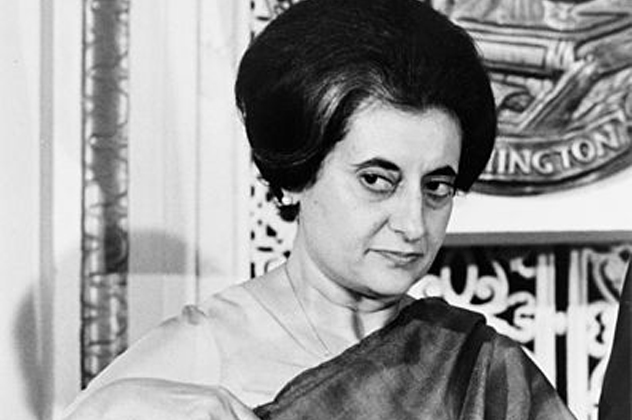
The 1984 Sikh massacre took place over the course of four days and resulted in the deaths of about 2,800 people. The pogrom was a result of the assassination of Indira Gandhi, the third prime minister of India, by her own Sikh bodyguards. Gandhi’s murder was a response to Operation Blue Star, an Indian military operation that resulted in the deaths of thousands of civilians as well as the desecration and destruction of Harmandir Sahib—otherwise known as The Golden Temple—the holiest Gurdwara (place of worship) in Sikhism.
Most of the violence occurred in New Delhi, India’s capital city, where “frenzied mobs of young Hindu thugs [were] thirsting for revenge.” When asked about the attacks, Rajiv (Indira Gandhi’s son and the new prime minister) gave a cryptic message: “Once a mighty tree falls, it is only natural that the Earth around it shakes.”
While it claims the title of a riot, the 1984 Sikh massacre was well organized and orchestrated by influential people in India with the help of law enforcement and government officials. In some cases, mobs were given lists of voters in order to make the identification of Sikhs that much easier. To make matters worse, nearly every murderer escaped justice, including the people who started it.
4Black July
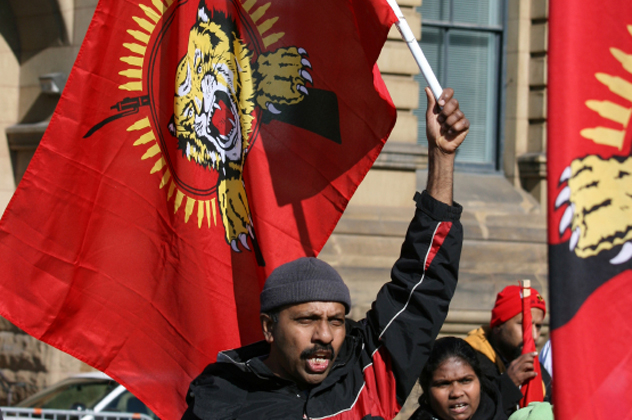
Like many of the pogroms throughout history, Black July was a “justified” vengeance for wrongs committed by the victims. In this case, a militant group known as the Tamil Tigers, whose goal was to create an independent state for the Tamil minority of Sri Lanka, killed 13 members of a government military patrol. Consumed with alcohol, nationalism, and underlying racism, various mobs of the Sinhalese majority took to the streets over the next few days and caused as much suffering to the Tamil people as possible.
Described as “more horrific and unrestrained in its violence than the Nazis’ Kristallnacht,” the pogrom took the lives of 4,000 people, some of whom were burned alive. Much like the 1984 Sikh massacre, witnesses said the gangs that roamed the streets had records of which houses were Tamil. Tens of thousands of Tamils fled during the week of violence.
Black July served as an extremely effective recruiting tool for Tamil militants, who seized the opportunity and began a full-blown civil war with the Sri Lankan government. The conflict lasted 26 years, with more than 100,000 deaths. Now, July is seen as a time of remembrance for those who fled in the Sri Lankan Tamil diaspora.
3Adana Massacre
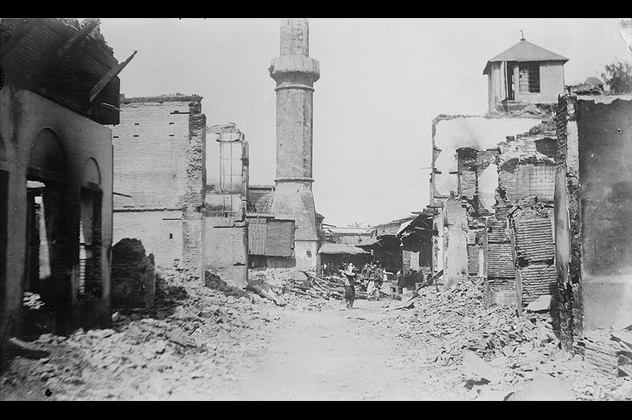
Taking place before the Armenian genocide of 1915–1918, the Adana massacre shared the same root causes that were perpetrated by the Ottoman Empire. Political upheaval was the law of the land, and various political groups staged coups in the years leading up to the pogrom. The Armenians, especially those in Adana, were seen as wealthier and more prosperous, often at the expense of Muslims. And like many of the pogroms on this list, the victims were of a different religion . . . in this case, Christian.
Seen as sort of a dress rehearsal for the public’s ability to withstand widespread violence toward Christian and Armenian populations, the Adana massacre took place in April 1909. Assisted by Ottoman troops, the Muslim majority of Adana destroyed the Armenian citizens (a quarter of the city’s population). In addition to the extensive property damage, 30,000 Armenians were killed—nearly half of the town—as the violence spread throughout the province. In the weeks that followed, the Ottoman government conducted an investigation but failed to prosecute a single person.
2Rhineland Massacres
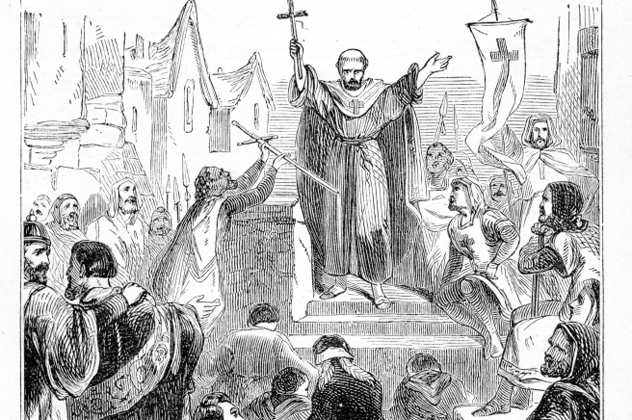
In 1096, the Rhineland massacres took place as the earliest recorded Christian pogrom. The idea of a march on the Holy Land—the first Crusade had just gotten started—sent mobs of peasants on the march while the Christian crusaders roamed the German countryside. Muslims were the main target, as they had captured much of the Levant centuries earlier, but the Jewish population was seen as just as evil.
Marching toward Jerusalem, many of the crusaders took it upon themselves to convert Jews to Christianity. They killed those who resisted. Many Jews took their own lives instead of committing the blasphemous act of baptism. Many communities successfully bribed the crusaders, avoiding any violence, but a few cities, like Worms and Mainz, had many of their Jewish citizens killed. In Mainz alone, as many as 1,100 people were said to have been killed.
One contemporary Jewish scholar went so far as to argue that Count Emicho, a count in the Rhineland and leader of the “German Crusade,” had a vision in which he was to be the Last Emperor—a man tasked with converting Jews, retaking the Holy Land, and bringing about the apocalypse. Others say the scholar was just mocking him. Count Emicho met his end at the hands of the Duke of Swabia in Hungary, some 2,200 kilometers (1,400 mi) from Jerusalem. Other sources say that he lived and escaped into obscurity.
1Iasi Pogrom
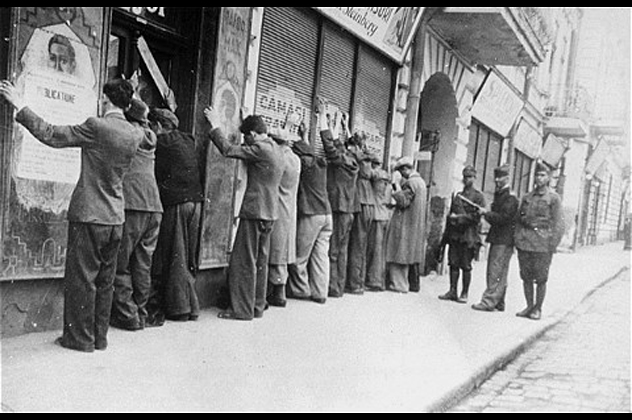
Much like its World War II ally, Nazi Germany, the country of Romania felt it necessary to blame its troubles on the Jewish people, especially the threat of communism. With their strong hatred for the Jewish, the people of Iasi had started pogroms in the past, but the actions that began on June 28, 1941, were infinitely more horrific.
The pogrom was one of the most infamous events of the Holocaust in Romania and a result of their government’s claim that, since the city was close to the Soviet border, the Jewish population was likely to rebel against the Romanians. The city Iasi suffered the brunt of the anti-Semitic policies that followed the pogrom. Just before the onset of the riots, nearly half of the 100,000 people who lived in Iasi were Jewish. It was a number that soon diminished drastically.
It began with false pretenses of violence. Romanian troops shot or arrested nearly 2,000 Jews and brought them to the courtyard of the police headquarters. By noon of the next day, the number was up to 6,000. On Sunday, almost 12,000 Jews in the courtyard were shot and beaten to death as the violence spread to the rest of the city.
When talking about the anti-Semitic violence that consumed his country, the Romanian dictator Marshal Ion Antonescu said: “It makes no difference to me that ‘we’ll go down in history as barbarians.’ There has not existed a more favorable moment in our history. If it is needed, shoot all of them with machine guns.”
